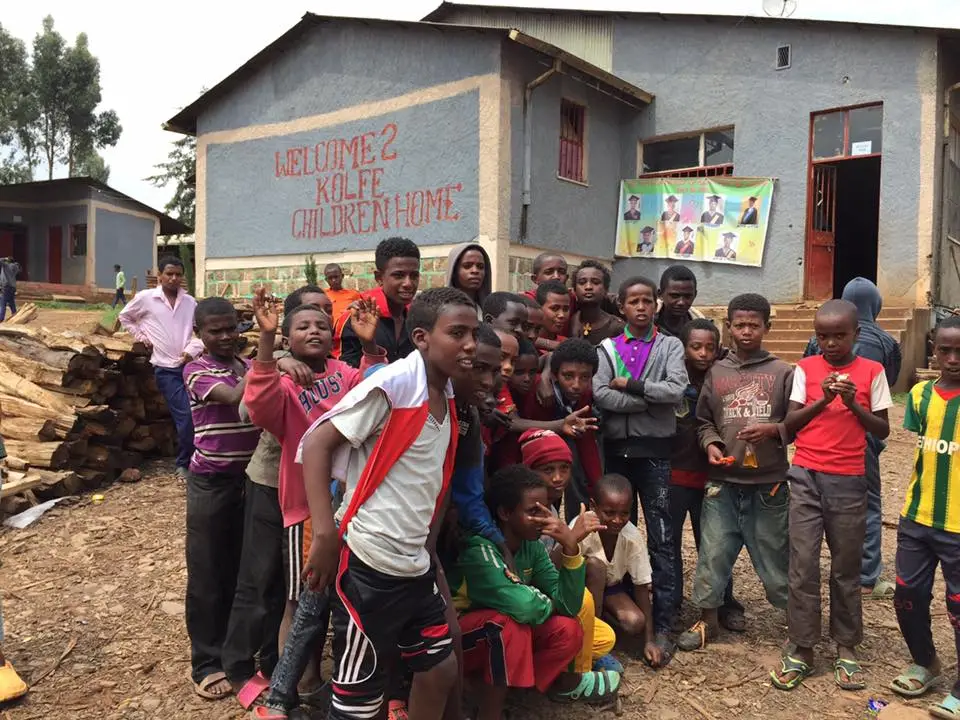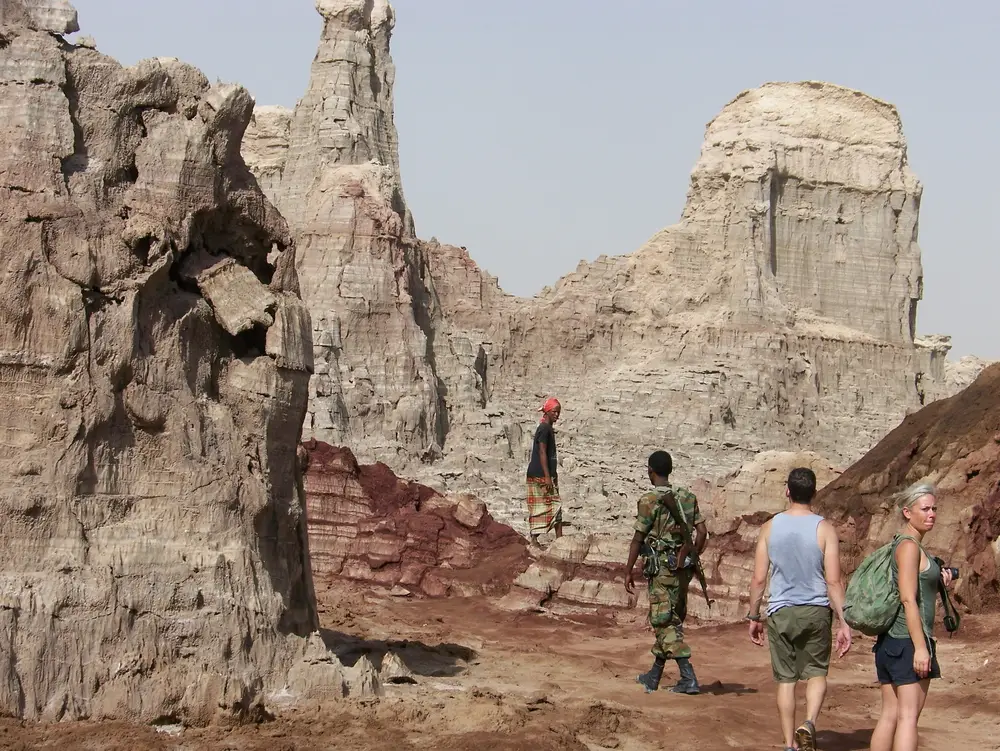
Today has been the most mentally exhausting day I have ever experienced in Addis Ababa. A couple of us finally managed to step away from the hospital and go out for some exploring. It gave us a better feel for how the patients we see are living before they come to us. Many of our patients do not have homes or live in orphanages. We visited two private schools, an orphanage for boys, an after care patient rehab facility, and Aabett, a hospital nearby.
We had the privilege to have two O.R. nurses from New York, with a team called Spine Hope, come help out with us for a few days. Their names are Diane and May. They have been coming to Addis Ababa for years and have even adopted boys in the orphanages. Their adopted children all live in Addis Ababa and they pay from the U.S. for them to attend private school. They also take care of their well-being and are a parents to them just like they are to their own in the U.S. The adoption process is more like a sponsorship, where they can keep up with their kids, send them things they need, and see them whenever they visit. But it’s also such a unique bond between them to where the children call them mom, and they love them as if they were their own. When Diane and May visit they always stop by the schools and speak with their children’s administration to make sure the education they are paying for is being properly addressed. When we hear the words private school in the U.S. we automatically think luxury, or riches. In Addis Ababa, private school is taking them out of government schooling; if they even attend school at all, which have class sizes of 70-100 students. The government education is challenging in comparison, and though private school is a grand step up, it is in no way considered a luxury in U.S. standards.
We went and visited two of their kid’s schools today. The first private school we visited, African Dream School, had a very peaceful learning environment. The campus was very secluded and had lots of shade for the students. When we arrived we were greeted by a small group of students who were very excited to see us. We did a tour of their library as well as looked into some of the classrooms. The library was nice in comparison to some of the buildings that I’ve seen here in Addis Ababa and it had a sufficient amount of books. When we spoke to the administrator about May and Diane’s children we saw that one of their sons had been absent quite a bit recently. This caused a sense of worry to come over May because her son has diabetes. She adopted him so she could pay for the proper medicine and care while he’s living in the orphanage. His grades were dropping due to attendance, but it is hard for him to achieve academically due to the circumstances that surround him. Both boys were absent from school when we got there so May and Diane decided they would figure out why when we got to the orphanage later in the day. When we were leaving the campus we walked passed a classroom that had the windows open and the kids were singing songs. They sing the same songs that any second or third grader would sing in the United States, but in Amharic.
We left the school in the same type of white van that every Ethiopian driver owns. The traffic in Addis Ababa was horrendous yesterday. There are no lanes, and everyone drives wherever they want, whenever they want and they don’t care how close they get to you. And of course the idea of wearing a seat belt here is completely unheard of.
The next stop we made was to Enat Primary School. When we walked in we got the celebrity red carpet treatment. The kids were jumping up and down trying to see us. They were hanging out of their classroom windows, and crowding around us. We arrived around lunchtime so it was a little more acceptable that we were being disruptive of class. They were already pretty rowdy but when we pulled out the camera the kids went insane trying to get us to take pictures of them. It was very adorable, but they clung onto us so it made it hard to walk. The kids really clung onto Jason. They couldn’t get enough of him. It was hilarious; they told him that he had big feet and boogers in his nose. The feet part is accurate, but the other wasn’t. The schools are very different from schools in the states. They seem more outdoorsy than in America. They have paintings on all of the walls. One wall was painted as the different parts of the eye, one the different continents, parts of the body, food, etc. The variety was impressive.
The next place we went was called Alamechan. It is an after care rehab facility for patients who have had severe surgeries and have nowhere to go, or have thousands of miles to travel to get back home. We talked about partnering with Dr. Rick Hodes, the main guy who coordinates and gets all of the patients prepped before we arrive, about sending our patients there after surgery. The age range for these patients is anywhere between five and twelve and a half. The problem we had last year and years before is the patients don’t want to leave the hospital. The conditions of the hospital are better than where they live. They have begged us to stay numerous times and it is very sad that we aren’t able to let them. This rehab facility could be an amazing alternative to traveling home!
Next we visited an all-boys orphanage named Kolfe Children Home. This was the par that was the hardest for me… I have never seen such horrible living conditions. The entire facility was an old military compound during the war. The floors were cement as were the walls. The kitchen was three huge cement blocks with holes in them and a fire underneath them. They had an entire room full of wood that they used for the fire to cook the meals. They have anjera every night, which if you remember from last year is their signature dish. When we were touring, there was trash all over the ground and the “bedrooms” had broken windows and poorly modeled bunk beds. There was an autistic boy who clung onto us and didn’t let go; he went from person to person. It was almost like he wanted us to rescue him and it broke my heart that there was nothing I could do for him. When we got to him, May’s son, the diabetic, had been sick from not having his insulin and his blood sugar was in the five hundreds he could hardly walk. His insulin was sitting out on a table beside his bed where it was getting hot because there is no air conditioning so it was going bad before it was given to him. They had a fridge in the office that was empty and his medicine could have been put in there, but it wasn’t. The nurses argument was that May should buy him his own fridge to put the medicine in.. I just recently, within the last year, switched my major over to social work and this right here is the reason.
The last stop that we made was to Aabet hospital. Rick Hodes had implied that he wanted us to maybe switch to that hospital for surgeries instead of MCM so we checked it out. There were a lot of other factors we would need to take into account if we were going to do surgery there and from the second I walked into that hospital I automatically knew that it wouldn’t work. They did not have any of the equipment we needed to be able to perform the extreme surgeries that we do. We came to the decision that since we have built such close bonds with the staff we would stay where we were. We have made so much progress. Each year gets better and better.
Today Lucy and I realized how nice it is to not have our cell phones and other distractions during the day. In Ethiopia, it is common to sit and have coffee with your friends, or your colleagues. In America we are constantly moving and multitasking with fast food, and to go coffees, etc. Here you sit down and have a macchiato on a little saucer with a spoon and talk and enjoy your coffees. I feel like we never sit down and savor a coffee like that unless it is thoroughly planned beforehand.
I’ll write again tomorrow!
Thanks for reading, stay tuned.


